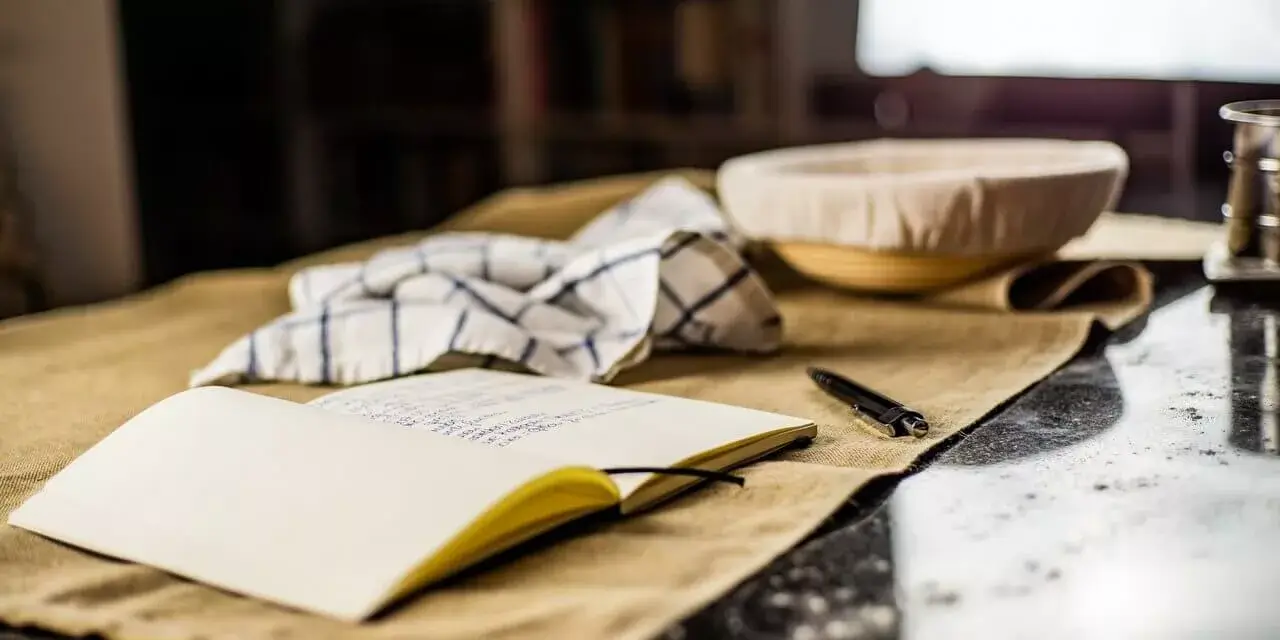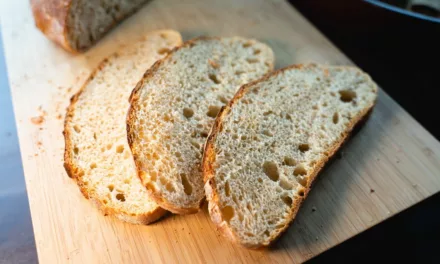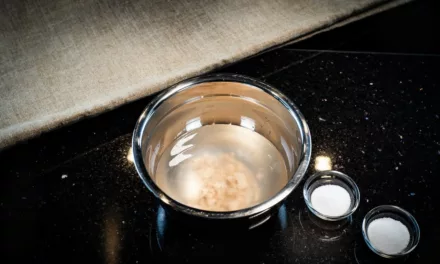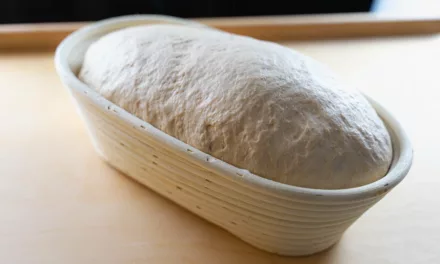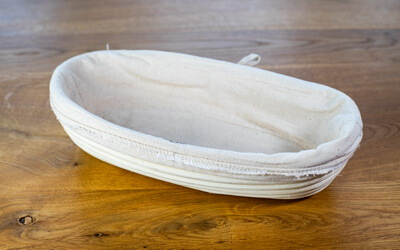A
Ash
Ash content refers to the mineral content of a flour, and is determined by burning a given quantity of flour under prescribed conditions and measuring the residue.
Autolyse / Autolyze
Flour and water (sometimes even yeast) are mixed together to a pre-ferment (predough) and put aside to rest for a while. During that time, protein and starch begin to swell to develop gluten strands.
The purpose of this step is to soften the dough which leads to shorter kneading time for the final dough. Additionally, it improves the flavor and texture of the bread.
B
Bulk Fermentation
First fermentation process after all ingredients are mixed together to a final dough.
D
Coil Fold
Same as stretch & fold, coil folding encourages the gluten development in a dough by degassing and adding new oxygen to it which leads to a better structure, but is done in high hydration doughs.
A step by step guide can be found here.
Crumb
Texture of the inside of a bread.
D
Dissolve
To dissolve is to mix a dry substance into a liquid until the solids have disappeared. For example yeast, sugar or salt in water.
Dock
Poke little holes on top of the dough.
F
Feeding
Process of maintaining a starter to keep it active and healthy.
Done by taking out a portion of the starter into a new jar, adding flour and water and mix it together.
Usually done before making a new sourdough bread or keeping the starter alive for one or two more weeks in the fridge.
More information about how-to maintain a sourdough starter can be found here.
G
Gluten
A protein found in grains. It is important for the bread making process.
After mixing flour and water together, gluten swells to form a grid of fine strands inside the dough. That grid forms the structure of the dough and makes it elastic and extensible.
H
Hydration
Ratio of liquid to flour in a dough.
Formula: Liquid / Flour * 100 = Hydration
Example: A dough with 1000 g flour and 600 g water has a hydration of 60%.
L
Levain
A sourdough leavening agent made from starter, flour and liquid.
The purpose of this step is to boost the yeast activity of the sourdough.
Long Moulding
There are several different techniques to bring a dough into a desired shape.
One of it is called long moulding with which you can shape dough into an oval shape:
- Place the dough on a lightly floured surface
- Flour your hands a bit
- Spread it gently out to a rectangle
- Fold the bottom side halfway to the top so the edge is in the middle and press the edge down gently
- Fold the left side about 1/4 to the middle and press the edge down gently
- Fold the right side about 1/4 to the middle and press the edge down gently
- Fold the top side about 3/4 to the bottom so this edge is past the edge you previously pressed down in the middle
- Flip the dough over so the seam-side is on the surface
- Gently roll the dough back and forth until you get a nice tight surface on the top and the sides
M
Mature Sourdough Starter / Ripe Sourdough Starter
Other than the “normal” starter, a mature sourdough starter or also known as ripe sourdough starter is a starter with a lot of activity. Such a starter should rise by at least 200% after feeding it.
Most of the time this is accomplished by feeding the starter at least 3 times consecutively. This means feeding the starter, waiting until it has fully risen and than feeding it again like it is done for maintaining a sourdough starter.
P
Poolish
Similar to autolyse, but flour and water are mixed together in equal parts. Sometimes a very small amount of yeast is added. For example 200 g flour is mixed together with 200 g water.
Proof / Prove
Final rise of the already shaped dough before baking.
R
Rest
A period in which the gluten in the dough can relax.
For example after kneading or shaping.
Rounding
There are several different techniques to shape a dough into a round ball. For example you could use this one:
- Place the dough on a very lightly floured surface
- Pull the edges from the sides in the air and then in the middle of the dough to create a smooth outer skin on all sides of the dough ball
- Place the dough ball seam-side down on a non floured surface
- Put both of your hands with the ball of your hand on the surface behind the dough ball
- Pull your hands just a bit towards you, very slowly, while keeping the ball of your hand on the surface
- Turn the dough ball 180° and do the same thing again
- Repeat these steps about 4 to 6 more times
You can find step by step images for this technique here.
S
Score
Cutting into the surface of the final shaped dough with a very sharp razor or knife just before baking.
There are two reasons for scoring.
The first and more important one is to help the bread to expand in the oven in the right places. Without scoring, the bread could tear up in places someone wouldn’t want it to, like for example on the sides or near the bottom.
The second one is to give the bread a decorative element or a personal signature like many bakers do to keep their different breads apart.
Sourdough Starter / Starter / Mother Dough
Rest of sourdough that is kept for using in new sourdough bread.
A starter reduces the expenditure of time for creating a new sourdough as it already contains a lot of good bacteria, yeast and organic acids.
More information about sourdough starters and how to create one can be found here.
Stretch & Fold
Stretching and folding encourages the gluten development in a dough by degassing and adding new oxygen to it which leads to a better structure.
Mostly performed periodically during bulk fermentation, especially in high hydration doughs.
A step by step guide for the most common way of stretch and fold can be found here.
Steaming / Steam
Steaming is an important part during the baking process. Most of the time it is done directly after putting the final shaped dough into the oven or after a short delay.
The steam condenses on the surface of the dough which acts as a protective layer.
Benefits of proper steaming:
- Keeps the dough smooth in the beginning of the very hot baking phase so it can rise properly
- Improved oven spring so the volume gets bigger
- Nice, shiny and more crispy crust
- Generally a more beautiful look

